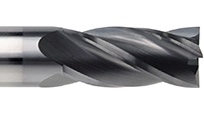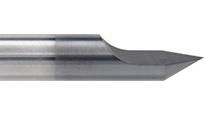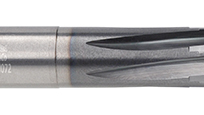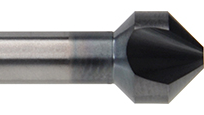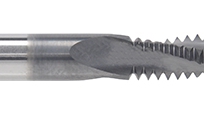End Mill Flutes: What Are They and How to Choose the Right Number for Your Project | Industrial-Tools UK
Understanding End Mill Flutes: Choosing the Right Number for Optimal Performance | Industrial-Tools UK
End Mill - Drill - Reamer
We are proud to offer the products listed in our catalogue. To help our customers experience first-hand the quality and reliability of our tools, we invite you to review our catalogue and request samples. This initiative reflects our confidence in the superior performance of our products and our commitment to customer satisfaction.
End Mill Flutes - What Are They, and How Many Do I Need?
When selecting an end mill, one of the most important factors to consider is the number of flutes. The flutes of an end mill are the spiral grooves that cut into the material, and they play a crucial role in how the tool performs. Here’s what you need to know about end mill flutes and how many are right for your project.
What Are End Mill Flutes?
Flutes are the spiral grooves that run along the length of an end mill. These grooves allow the tool to remove chips from the workpiece as it cuts. The flute design influences the tool’s performance, including chip removal, cutting speed, and the type of material you’re working with.
Key Characteristics of Flutes:
- Chip Removal: Flutes help expel chips and debris from the cutting area to keep the tool running smoothly.
- Cutting Action: The number and shape of flutes determine the cutting action and finish of the material.
- Tool Strength: The number of flutes impacts the overall strength of the end mill, as more flutes can make the tool stiffer but less effective in chip removal.
How Many Flutes Do You Need?
The number of flutes you need depends on the type of material, the cutting conditions, and the type of cut you’re making. Here’s a guide to help you choose:
2 Flutes:
- Best For: Materials that produce a lot of chips, like aluminum or plastics.
- Advantages: Greater chip removal, making them ideal for faster cutting speeds.
- Use Case: Roughing cuts, high-feed rates, and soft materials.
3 Flutes:
- Best For: Materials like steel, where a balance of strength and chip removal is important.
- Advantages: Better strength than 2-flute mills but still provides decent chip removal.
- Use Case: General-purpose milling and medium-hard materials.
4 Flutes:
- Best For: Harder materials like stainless steel and tool steel.
- Advantages: Provides smooth finishes and greater strength. Fewer chips are removed, so slower feeds are required.
- Use Case: Finishing cuts, precision work, and harder materials.
5+ Flutes:
- Best For: High-precision operations and very hard materials.
- Advantages: Extremely smooth cuts and greater strength but slower chip removal.
- Use Case: Finishing cuts with tight tolerances.
What to Consider When Choosing End Mill Flutes:
- Material Type: Softer materials (like aluminum) need fewer flutes for better chip removal, while harder materials require more flutes for strength.
- Cutting Speed: Fewer flutes allow faster cutting speeds due to better chip clearance.
- Type of Cut: For roughing cuts, fewer flutes work best, while for finishing, more flutes provide a smooth surface.
Choosing the Right End Mill from Industrial-Tools
At Industrial-Tools, we offer a variety of end mills with different flute configurations to meet your specific needs. Whether you're working with soft or hard materials, our high-quality cutting tools are designed for performance and durability.
At Industrial-Tools, we provide the finest CNC tools available to help you streamline your production and achieve flawless results every time.
Browse our extensive selection of CNC tools today and get the best quality tools for your machining needs.
Contact us for more information on our products and how they can benefit your business.
